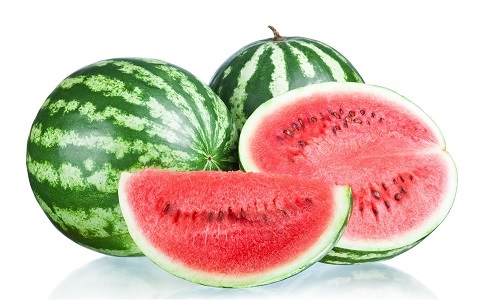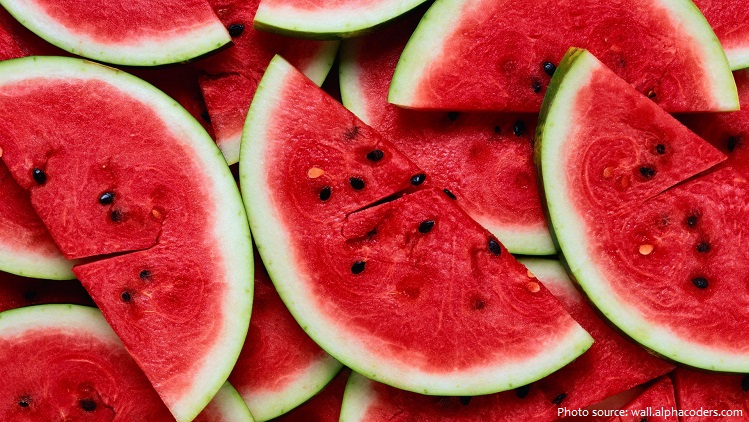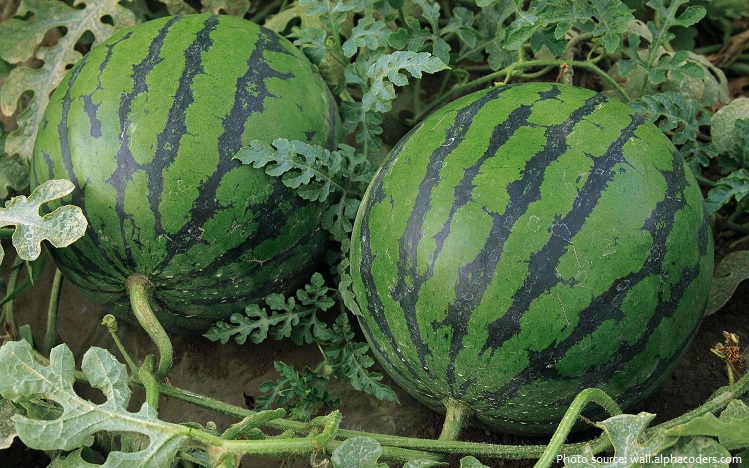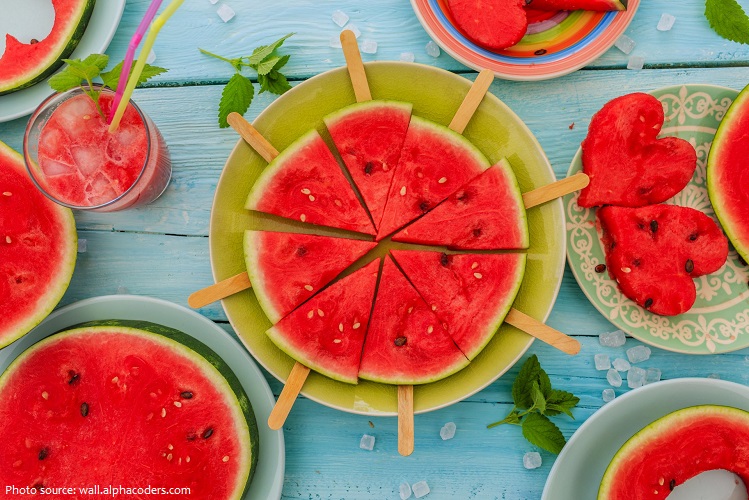Watermelon is the fruit of a plant in originally from a vine of southern Africa.
Watermelon is a fruit and a vegetable. It is a fruit because it grows from a seed, it has a sweet flavor and refreshing qualities. It is a vegetable because it is harvested and cleared from the field like other vegetables and because it is a member of the same family as the cucumbers, pumpkin and squash.
There are four basic types of watermelon: seedless, picnic, icebox, and yellow/orange fleshed.
There are about 1200 varieties of watermelon, but there is no appreciable taste difference among them. In fact, most stores call every variety simply “watermelon,” and rarely list the variety name.
The history of watermelons is a long one.
Domestication and selective breeding have resulted in intensely sweet large fruits with tender flesh and fewer seeds. Some modern “seedless” cultivars have almost no viable seeds.
There is a Sanskrit word for watermelon, and fruits are depicted in early Egyptian art, indicating an antiquity in agriculture of more than 4,000 years.
Evidence of the cultivation of both watermelon species in the Nile Valley has been found from the second millennium BC onward, and seeds of both species have been found at Twelfth Dynasty sites and in the tomb of Pharaoh Tutankhamun.
The Moors introduced the fruit into Spain and there is evidence of it being cultivated in Córdoba in 961.
The fruit had begun appearing in European herbals by 1600, and was widely planted in Europe in the 17th century as a minor garden crop.
European colonists and slaves from Africa introduced the watermelon to the New World. Spanish settlers were growing it in Florida in 1576, and it was being grown in Massachusetts by 1629, and by 1650 was being cultivated in Peru, Brazil and Panama, as well as in many British and Dutch colonies.
The watermelon is an annual plant that has a prostrate or climbing habit. Stems are up to 3 meters (10 feet) long and new growth has yellow or brown hairs. Leaves are 6 to 20 centimeters long (2.3 to 7.9 in) and 4 to 15 centimeters (1.6 to 6 in) wide. These usually have three lobes which are themselves lobed or doubly lobed. Each light yellow flower is either male or female, producing only pollen or fruit, respectively.
Watermelon weight varies from 1 to 2 kg (2.5 to 5 pounds) to 20 kg (44 pounds) or more. The number of fruits per vine varies from 2 to 15.
The sweet, juicy flesh is usually deep red to pink, with many black seeds, although seedless varieties have been cultivated.
Watermelon fruit is 91% water, contains 6% sugars, and is low in fat.
There are 30 calories in 100 grams (3.5 ounces) of watermelon.
Watermelon is a very good source of vitamin C. It is also a good source of pantothenic acid, copper, biotin, potassium, vitamin A (in the form of carotenoids), vitamin B1, vitamin B6 and magnesium.
The health benefits of watermelon include prevention of kidney disorders, high blood pressure, cancer, diabetes, heart diseases, heat stroke, macular degeneration, and impotence.
Watermelons last from 14 to 21 days at 13 degrees Celsius (55 F) after harvest.
In China, watermelon is stir-fried, stewed and often pickled and used as a vegetable.
Square watermelons are watermelons grown into the shape of a cube. The Japanese created them to fit more compactly in fridges and be able to be cut more easily (without rolling). They were invented by graphic designer Tomoyuki Ono in 1978. They are very expensive, with prices as high as $100. Since the advent of the square watermelon, other watermelon shapes have been introduced, such as hearts and pyramids.
The heaviest watermelon weighs 159 kg (350.5 lb) and was grown by Chris Kent (USA) of Sevierville, Tennessee, USA, as verified by the Great Pumpkin Commonwealth on 4 October 2013.
Watermelon is grown in about 100 countries worldwide.
China is the world’s top producer of watermelons.
The word “watermelon” first appeared in the English dictionary in 1615.
Early explorers used watermelons as canteens.
In China and Japan, watermelon is a popular gift to bring a host.
American humorist Mark Twain, in one of his novels, had a character colorfully refer to the watermelon as “chief of this world’s luxuries, king by the grace of God over all the fruits of the Earth. When one has tasted it, he knows what the angels eat. It was not a Southern watermelon that Eve took; we know it because she repented.”





